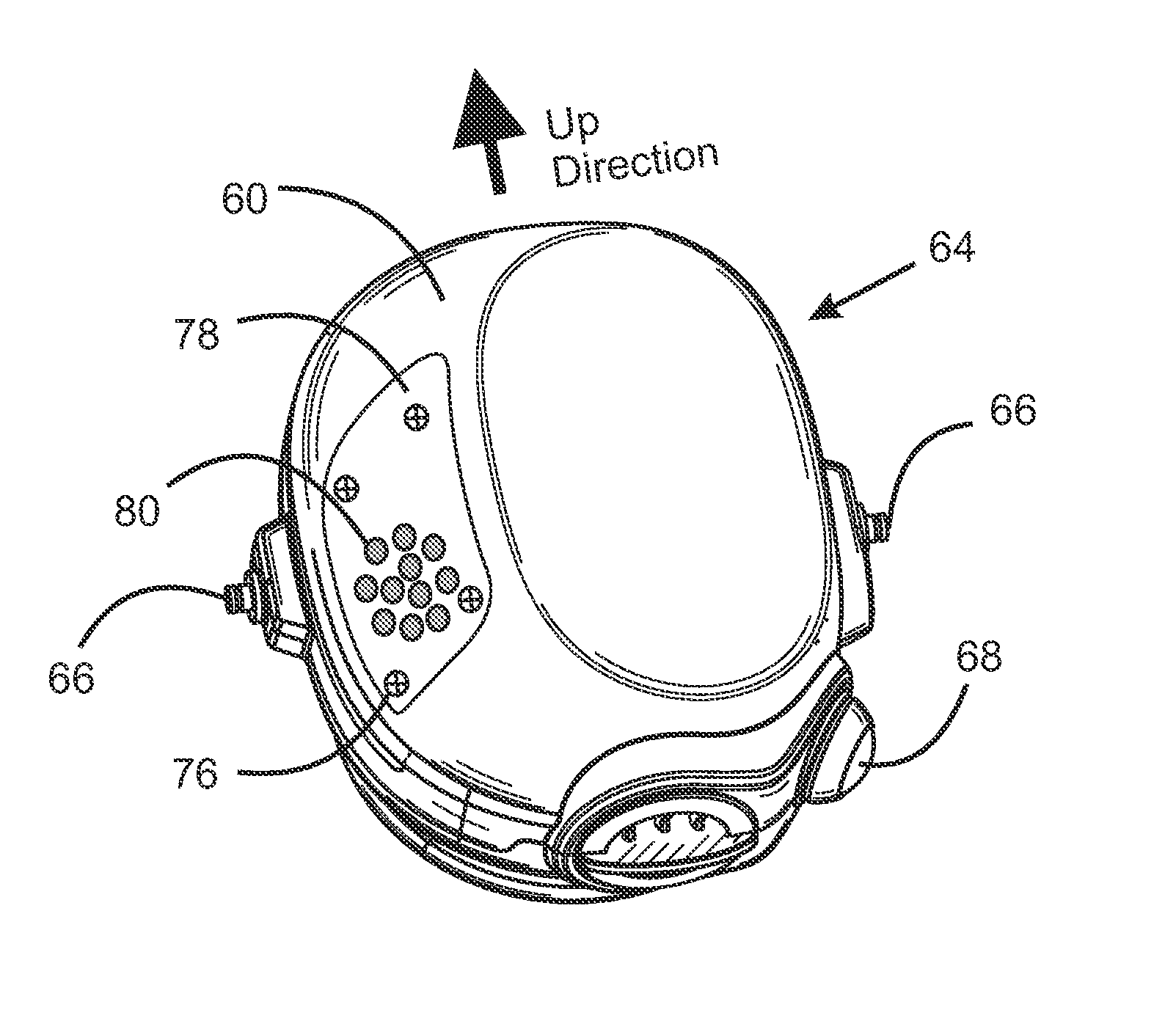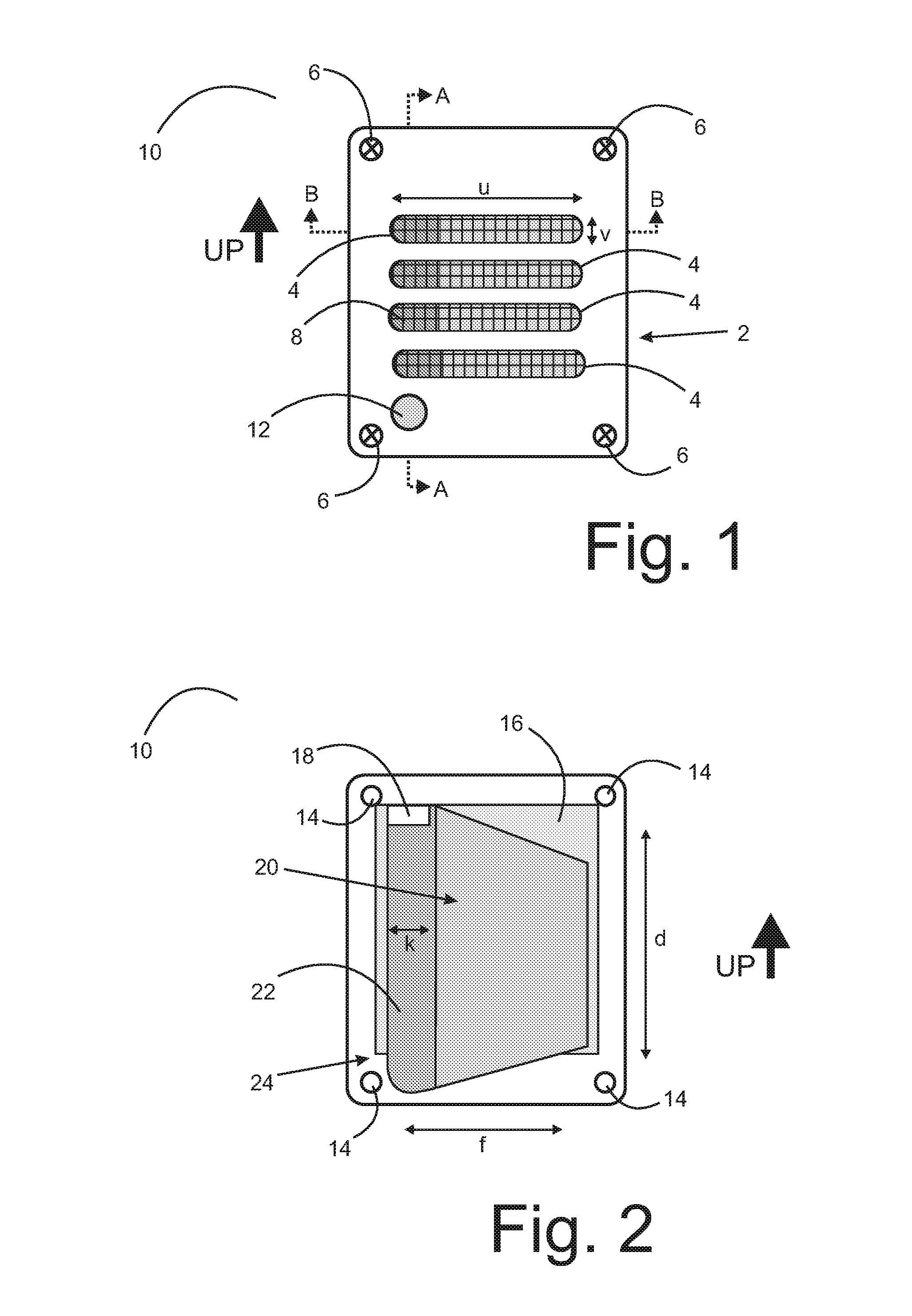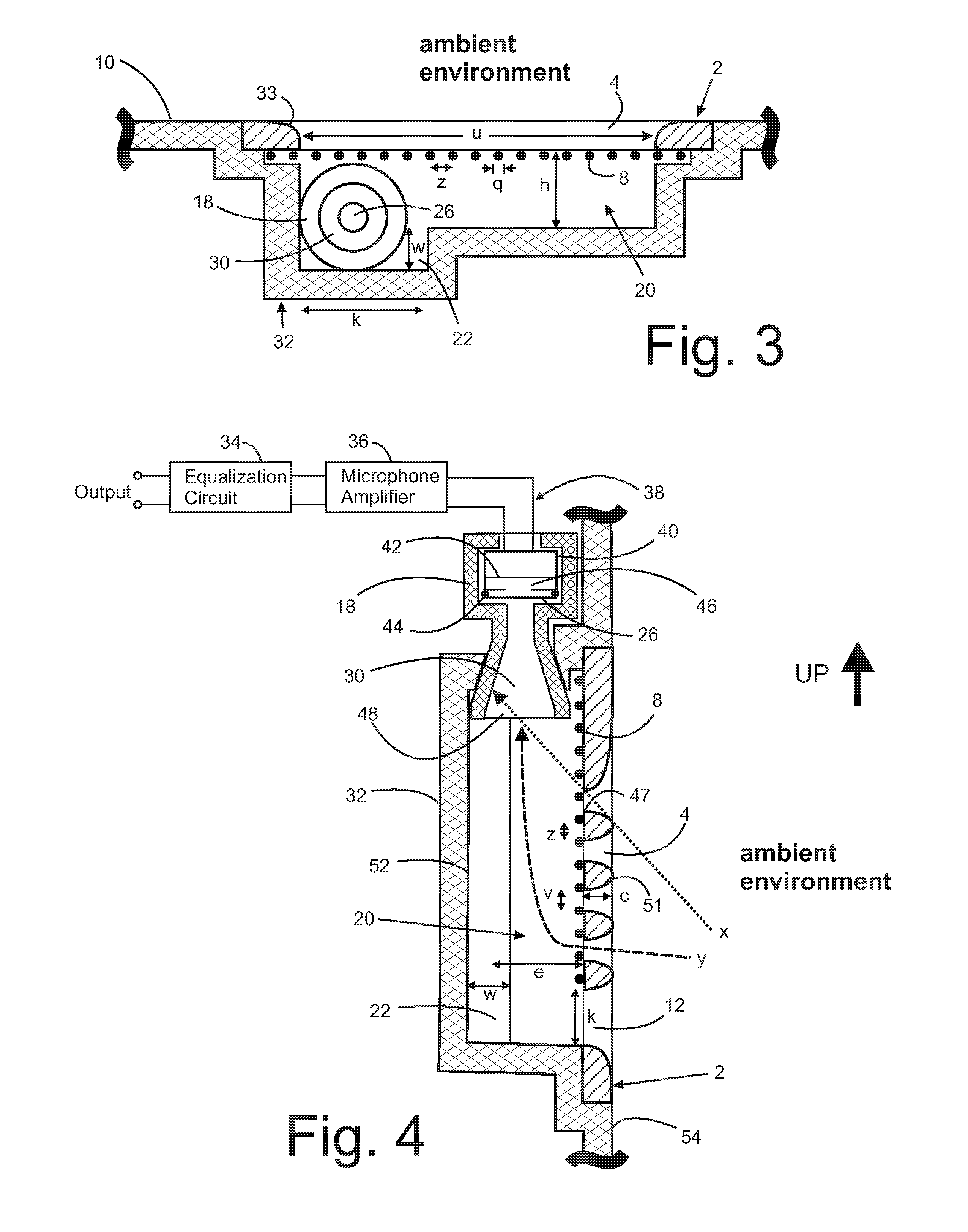Microphone Environmental Protection Device
- Summary
- Abstract
- Description
- Claims
- Application Information
AI Technical Summary
Benefits of technology
Problems solved by technology
Method used
Image
Examples
Embodiment Construction
[0023]An embodiment of the invention is a device for protecting microphones against environmental damage which incorporates a special perforated barrier on the outer surface of a chamber, which provides a line of sight from outside the chamber volume to inside the chamber volume. The cross-sectional area of the perforations are large enough that water can easily pass through the barrier and the barrier is self-cleaned with rain or can be cleaned deliberately with a spray bottle. An outer layer of the barrier can be made of a solid rigid material, such as plastic or metal, with slotted perforations backed by an inner layer of metal mesh material.
[0024]A drainage path can be provided for water and debris that accumulate in the chamber volume. The water drain may be a path back through the perforated barrier, or a separated dedicated drain path can be provided. This allows the device to be self-cleaning during rain and easily to clean using a spray bottle.
[0025]The barrier in this embo...
PUM
 Login to View More
Login to View More Abstract
Description
Claims
Application Information
 Login to View More
Login to View More - Generate Ideas
- Intellectual Property
- Life Sciences
- Materials
- Tech Scout
- Unparalleled Data Quality
- Higher Quality Content
- 60% Fewer Hallucinations
Browse by: Latest US Patents, China's latest patents, Technical Efficacy Thesaurus, Application Domain, Technology Topic, Popular Technical Reports.
© 2025 PatSnap. All rights reserved.Legal|Privacy policy|Modern Slavery Act Transparency Statement|Sitemap|About US| Contact US: help@patsnap.com



